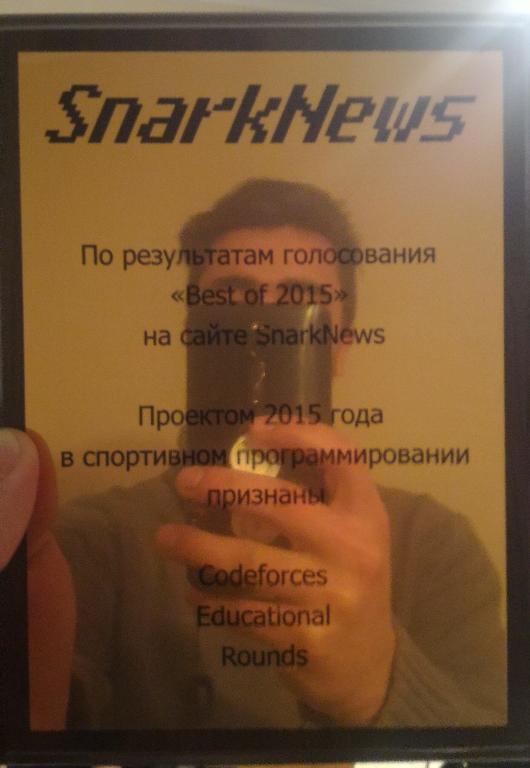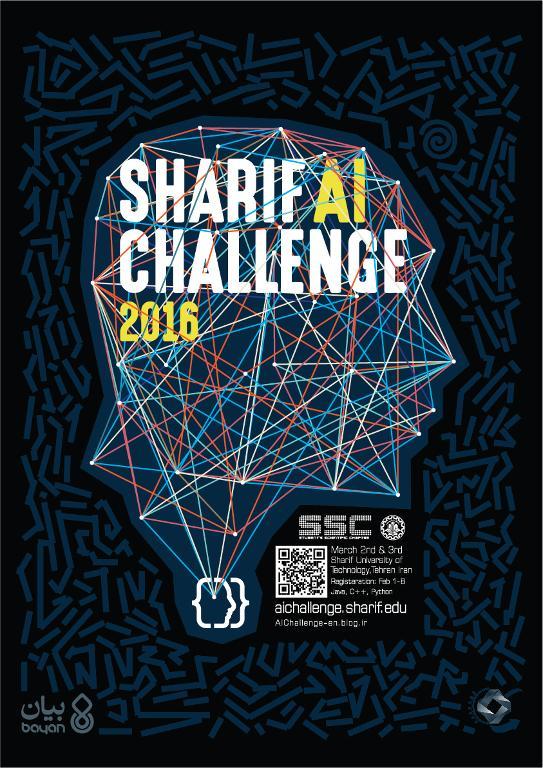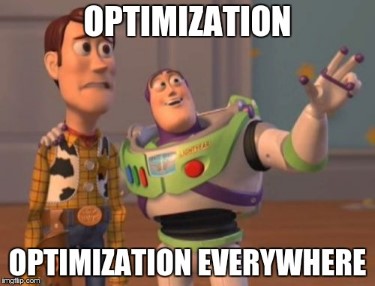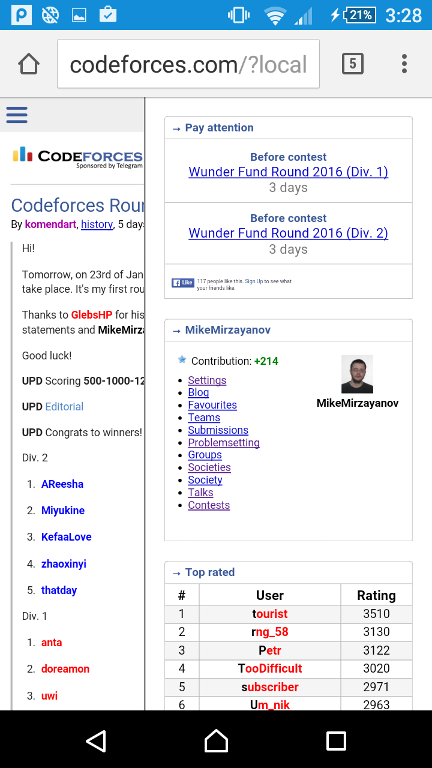Hello everyone! The first round of the 8VC Venture Cup will be held on Saturday, February 13th at 12:35PM EST. ecnerwala and I are the problem setters. We want to thank GlebsHP for his help in preparing the contest, Delinur for translating the problems, and MikeMirzayanov for creating the Codeforces platform
The contest is for competitors in both divisions and contains seven problems. The scoring distribution is as follows:
500 — 750 — 1000 — 1500 — 2000 — 2500 — 3000
The contest will be slightly longer than usual — two and a half hours. The top 200 contestants will advance to the final round, and the top 20 local finishers will be invited to Woodside, CA to compete onsite. Good luck!
UPD: System testing is now over. Congratulations to the top contestants:
The top 200 contestants will advance to the final round in two weeks. Congratulations!
The editorial can be found here.


























